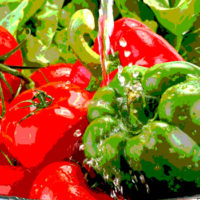The annual economic burden of foodborne illness in Australia amounts to an estimated $2.44 billion AUD, according to a report by Food Standards Australia New Zealand (FSANZ). The report also valuates other costs associated with business losses, regulatory activities, and outbreak investigations and surveillance.
The estimate is based on a cost model developed by the Australian National University (ANU), which considered expenses related to: 10 priority pathogens; cases of foodborne gastroenteritis and four other conditions resulting from foodborne illnesses (Guillain-Barré syndrome, irritable bowel syndrome, hemolytic uremic syndrome, and reactive arthritis); the diagnosis, treatment, and management of foodborne illnesses; lost productivity from non-fatal illness; pain and suffering; and the value of statistical life in fatal cases. The 10 foodborne pathogens assessed for their economic consequences, which were selected through a prioritization process, are as follows:
- Campylobacter
- Listeria monocytogenes
- Norovirus
- Non-typhoidal Salmonella
- Salmonella enterica serovar Typhi (Salmonella Typhi)
- Shiga toxin-producing Escherichia coli (STEC)
- Other pathogenic Escherichia coli
- Shigella
- Toxoplasma gondii
- Yersinia enterocolitica
According to the report, the largest cost associated with foodborne illness is lost productivity due to non-fatal illness, followed by premature mortality and direct medical care. Campylobacter was determined to cause the Australian economy the most stress at an estimated $365 million AUD annually, followed by norovirus, E. coli, and Salmonella, which cost Australians over $100 million AUD each. Although loss of productivity was the largest component of the overall economic burden of foodborne illness, for pathogens that typically cause more severe illness—such as L. monocytogenes, Campylobacter, STEC, and Salmonella—premature mortality was the most costly consequence.
Outbreak Case Studies
Aside from the ANU model, the report also used four outbreak case studies to explore economic costs associated with specific outbreaks of foodborne illness, including costs of control efforts and costs to businesses.
- S. Typhimurium associated with a bakery (2016): The total cost of a 2016 S. Typhimurium outbreak associated with a bakery was approximately $215,000 AUD, with about $4,500 AUD in testing of food samples and $7,200 in regulatory labor hours; $91,000 in lost productivity; and a $120,000 fine and six weeks of business closure
- L. monocytogenes in rockmelons (2018): The total cost of a 2018 L. monocytogenes outbreak associated with rockmelons was approximately $40.8 million AUD, with about $110,000 AUD in lost productivity; $39.2 million AUD in premature mortality; and a $13.1 million reduction in market value of Australian rockmelons
- S. enteritidis in eggs (2019): The total cost of a 2019 S. enteritidis outbreak associated with eggs was approximately $5.7 million AUD, with about $443,000 AUD in lost productivity and $4.9 million AUD in premature mortality; additionally, a cost-benefit analysis revealed that more extensive tracing, surveillance, and actions on farms affected by S. enteritidis could save the Australian economy $100 million by 2021 and $300 million by 2035
- S. Weltevreden associated with frozen meals (2019): The total cost of 2019 S. Weltevreden outbreak associated with frozen meals was approximately $289,000 AUD, with about $153,000 AUD in lost productivity.
Food Regulation, and Outbreak Investigation and Surveillance
The report also explored certain costs associated with foodborne illness outbreak investigations and surveillance; however, such costs were evaluated separately from the ANU model. The report noted that FSANZ was allocated a $29.9-million-AUD budget for national food regulation in 2019–2020. Additionally, in 2020–2021, the Australian Government invested an additional $1.86 million AUD in OzFoodNet, which is a collaboration between the federal government and jurisdictional health authorities to fund epidemiologists who research foodborne illnesses, and identify and respond to outbreaks. Finally, the report cited a 2018 analysis that estimated sequencing and typing costs for Salmonella ranging from $25–$100 USD per isolate. Extensive costs of all aspects of the surveillance and regulation of foodborne disease are difficult to estimate and would require further analysis.





